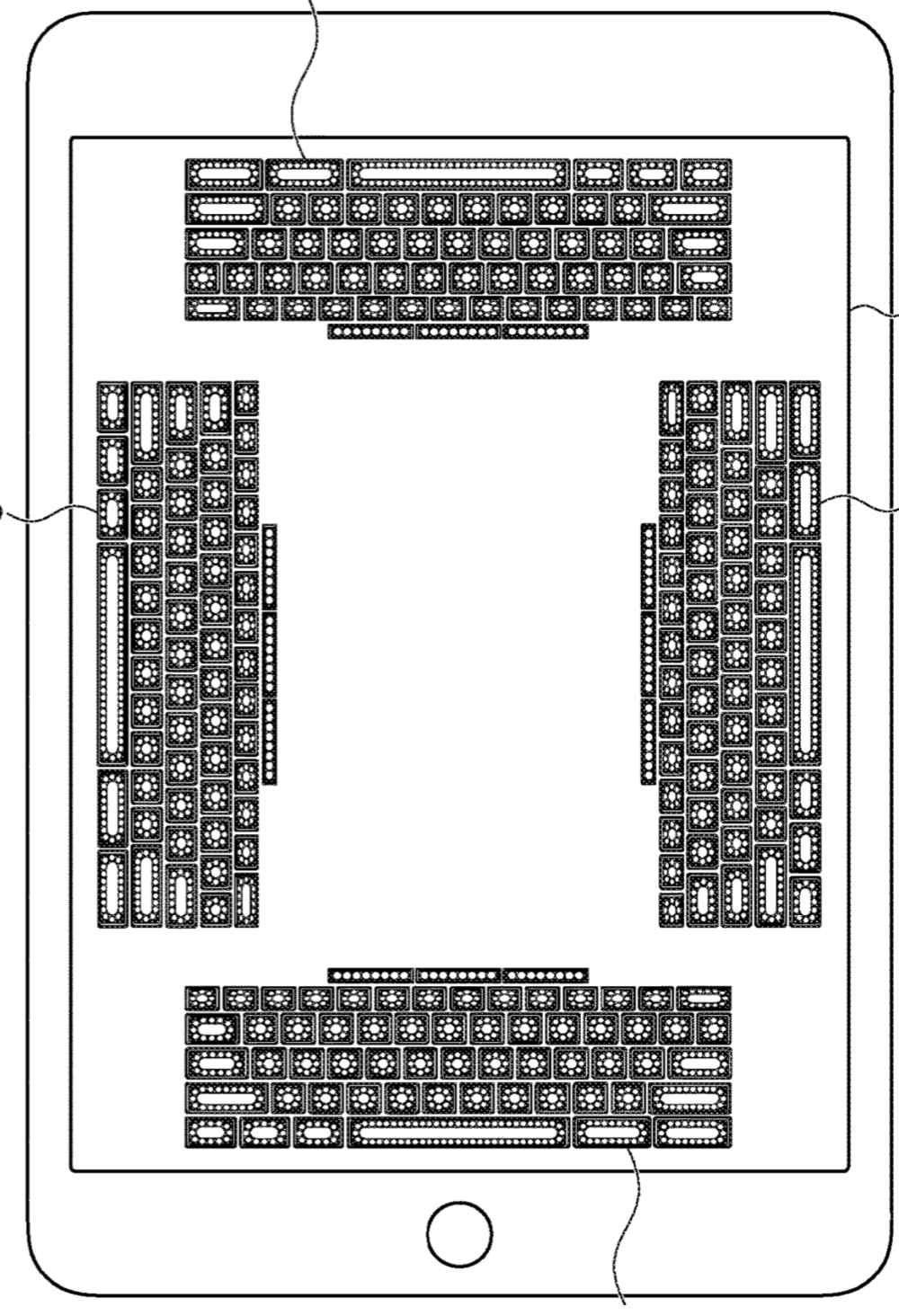I’ve never found a virtual keyboard to be nearly as effective as a physical keyboard. That could change if a new Apple patent filing (number 20190202889) for a “static pattern electrostatic haptic electrodes” comes to fruition.
It involves the use of “haptics” to make such keyboards feel more realistic to the touch. Such keyboards could be implemented on iPads, iPhones, and perhaps even Macs.

By the ways, a virtual keyboard is a software component that allows the input of characters without the need for physical keys. Haptics refers to any form of interaction involving touch.
Here’s Apple’s summary of the patent: “A virtual keyboard device includes a surface, a static pattern electrostatic haptic electrode disposed on an area of the surface, the static pattern electrostatic haptic electrode defining voids on the area of the surface between contiguous portions of the static pattern electrostatic haptic electrode, insulating material disposed on the static pattern electrostatic haptic electrode, and a controller operable to apply a voltage to the static pattern electrostatic haptic electrode.
“Application of the voltage to the static pattern electrostatic haptic electrode may produce a variable friction between a conductive object and the insulating material as the conductive object moves across the insulating material. In some implementations, the surface may be part of a display device that is configured to display a virtual key of a virtual keyboard in the area.”
The patent is similar to a filing by Apple in March 2018 for a a “keyless keyboard with force sensing and haptic feedback” that hints at Mac laptops with virtual keyboards instead of physical ones. In other words, the portable would sport two screens instead of one — with one display doubling as a keyboard.
In the 2018 patent filing, Apple says that traditional computing input devices — such as mice, keyboards, and trackpads, tend to operate using dedicated keys or buttons — lack the flexibility to accommodate expansive features offered by newer devices, operating systems, and software. As a further drawback, the dedicated keys or buttons of traditional input devices are unable to adapt to different user needs and preferences.
Of course, Apple files for — and is granted — lots of patents by the U.S. Patent & Trademark Office. Many are for inventions that never see the light of day. However, you never can tell which ones will materialize in a real product.
